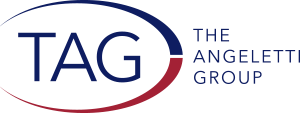The COVID-19 pandemic is certainly an unprecedented crisis, but for nonprofits weathering its effects, it is also a mandate—one that demands organizations communicate with donors with empathy, proactivity, and creativity. In difficult times, successful organizations “step on the gas” rather than retreat, knowing that this is a time to do more, not less.
With cancelled events and far fewer donor meetings—possibly for the foreseeable future—this means fundraisers have more time to consider and implement new strategies as well as refine existing development systems. One such case is in stewarding and retaining first-time donors. Many nonprofits have seen a surge in new donors, especially in the sectors of healthcare, critical needs, food security, and nonprofits serving frontline populations. A report by the Fundraising Effectiveness Project found that despite the pandemic and near historic unemployment, charitable giving increased by almost 7.5% during the first half of 2020 compared to the first half of 2019; including a 12.6% increase in new, first-time donors.
Does your organization have a first-time donor stewardship plan in place? Haven’t refreshed it in a while? Now is the perfect time to assess this critical building block for sustained fundraising success. Not only will the strategies below help you thank and retain this year’s new “COVID donors,” this approach offers a longer-term solution for effectively welcoming donors to your family.
- Create a clear timeframe for when you acknowledge a donor’s first gift including when and how you will follow up. Ideally, plan a complete strategy that includes multi-channel touchpoints, check-ins, and yes—even asks—over at least the next 6 months. This is even more important if your organization had an influx of new donors who responded to COVID-related needs: these donors represent a new “philanthropic pocket” that can grow to become the next generation of support for your mission. Formalize a plan, and ensure all staff and leadership know it.
- Thank the donor. Thank them again. And then, thank again. This is a cardinal rule of fundraising, and it applies now more than ever as donors of all levels are bombarded with evolving messages of need. We’re talking about people who gave you a donation for the first time—celebrate it! Send a personal note, offer an invitation to a virtual event, even send a gift if your program allows it; branded face masks and hand sanitizer have never been so in style.
- Share your success; be loud and be proud! As we all watch the events of 2020 unfold, there are moments when we can feel helpless. Remind your donors that they had an incredible impact, right here at home. Sharing your organizational success can be a moment of optimism in otherwise uncertain times. Your message should be fundamentally positive: we will get through this crisis by working together. Consider a monthly donor e-newsletter spotlighting impact and success, including both COVID-related and other stories that show your inherent mission in action. With so much uncertainty in the future, donors will value the reassurance—more than once—that their donation made a difference.
- Be strategic with communications across multiple channels. Your donors may be at home more frequently now (hey, at least it means they might open that letter!), but they’re also, quite frankly, everywhere! LinkedIn, Instagram, Facebook, TikTok, and more. Take the time to learn where your donors go for information and put your message there. Understand the nature of each platform and its specific strengths. Email marketing communicates one thing; social media conveys another; phone calls still another. Is your donation page ready for mobile? Are you taking full advantage of video? A simple (shoot it on your phone!) and personalized thank you video sent to a donor can make an incredible statement. Now is the time to expand your technological capacity to the fullest.
- Direct donors to where they can get the information they want. They gave to you in the first place, and there’s a reason for that. Play to your strengths and develop a set of Key Messages that you weave through all marketing platforms. Do you offer resources such as virtual learning guides? Is a physician from your organization answering questions about keeping healthy during the upcoming winter flu season and second wave? Do you have an expert who can offer advice on training service animals in public while remaining socially distant? Tell your donors; they want to know! You may need to constantly revise your Key Messages, even on a daily basis, if your organization is engaged in a fast-moving response to the pandemic.
American donors are remarkably resilient. Philanthropy, on the whole, has recovered from previous crises and even increased to reach record levels. While things may be difficult today, we encourage you to consider pandemic fundraising as the latest opportunity to demonstrate the necessity of nonprofit services and the resilience of your donor and volunteer community. The strategies that you try now, in this crisis, will help make your organization more successful on the other side.


